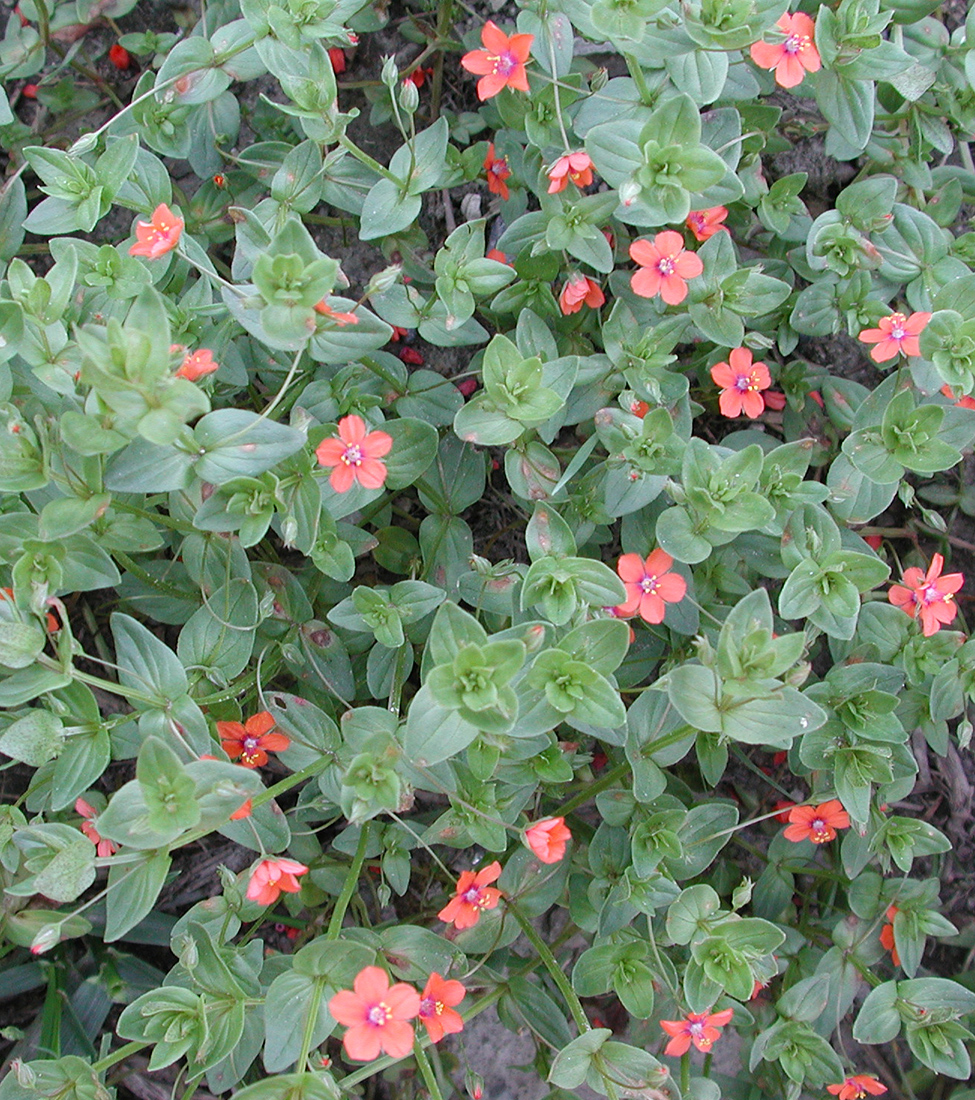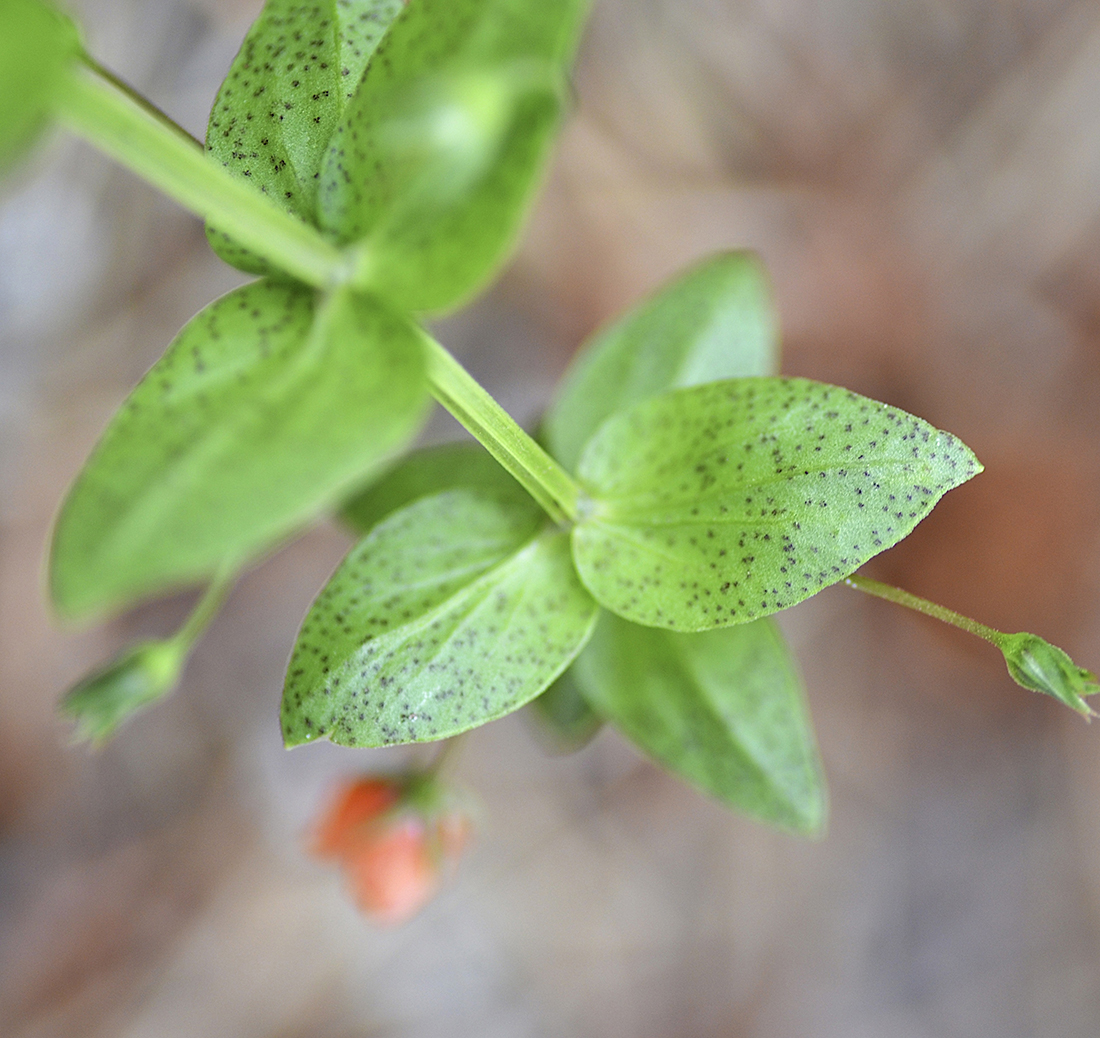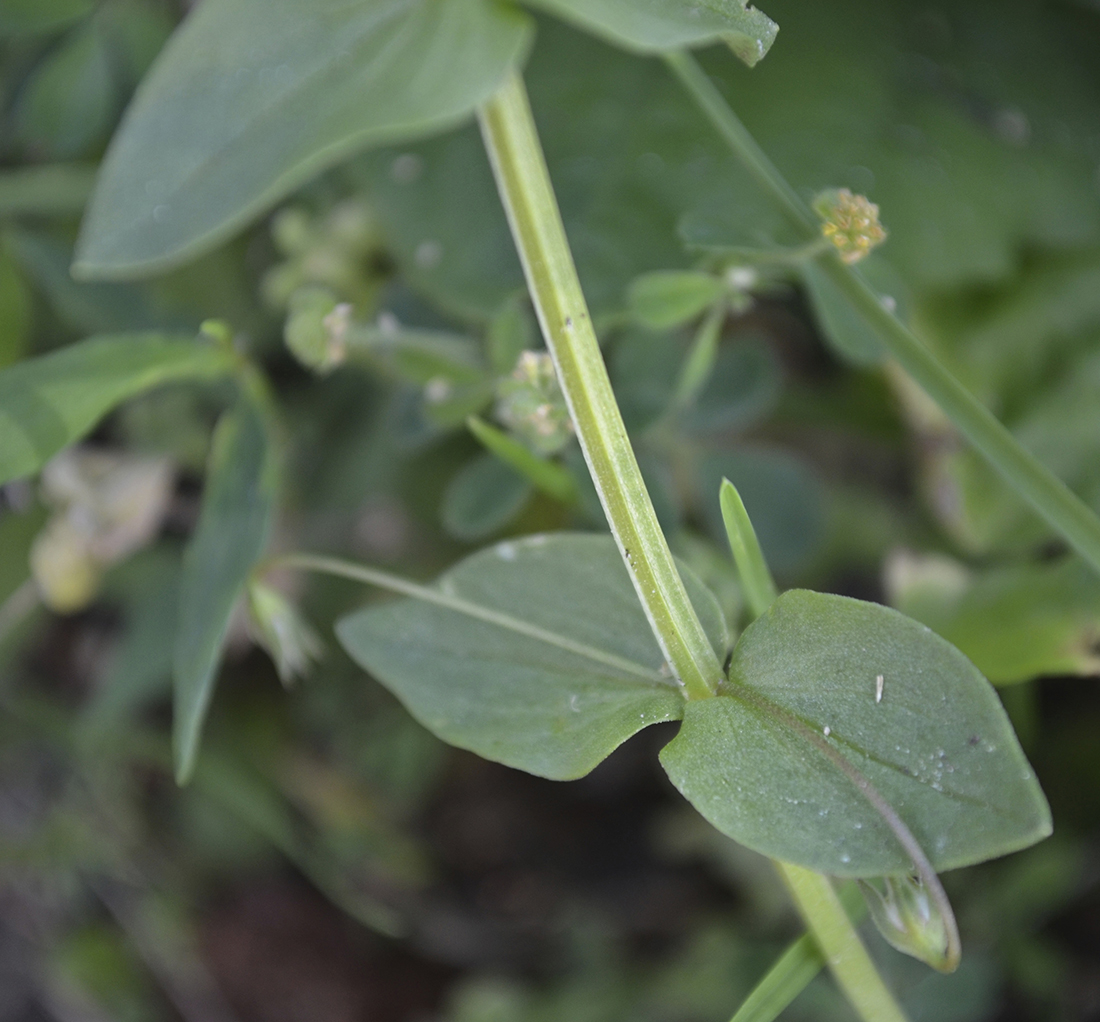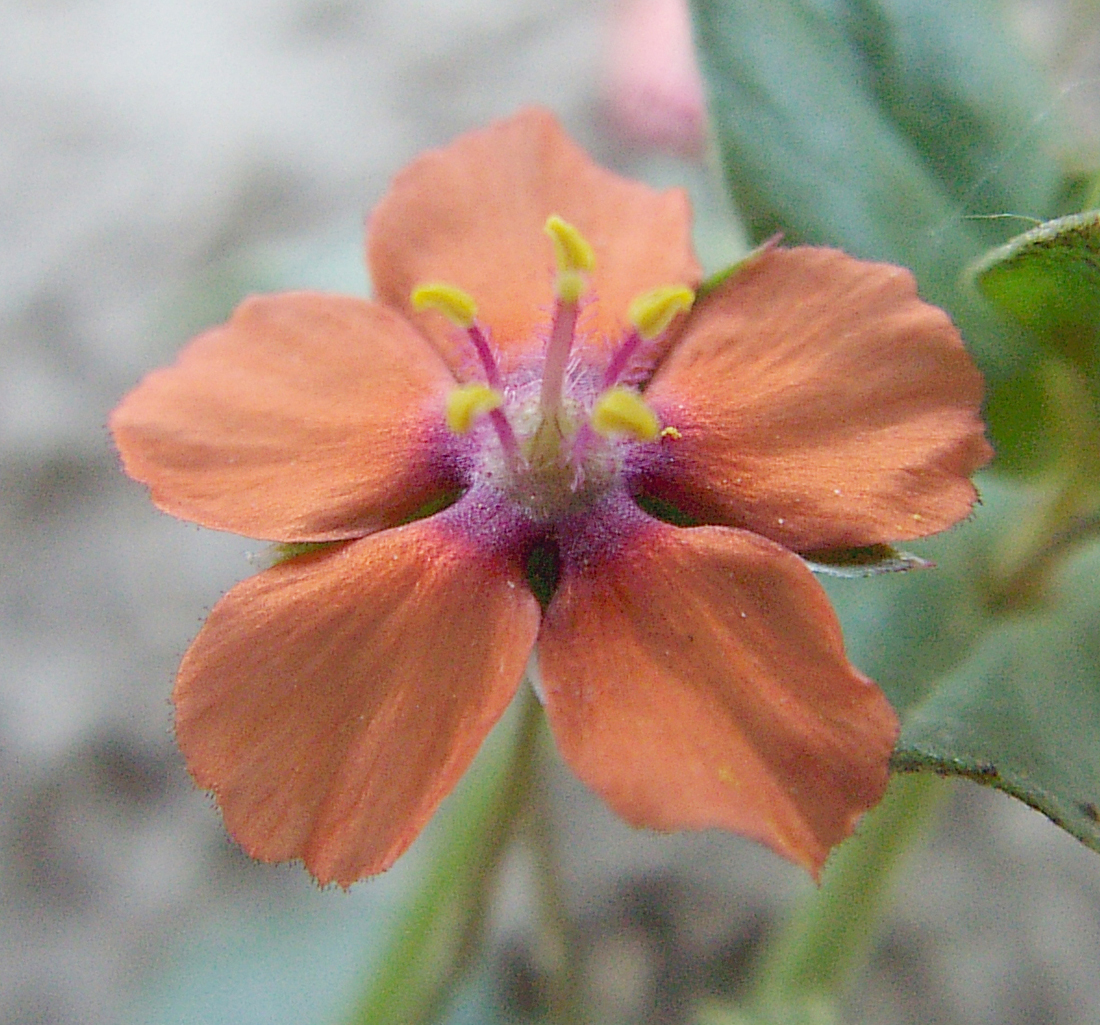Scarlet Pimpernel
Poisonous to livestock when consumed.
- Primsose (Primulaceae family):
- Anagallis arvensis L.
- EPPO code:
- ANGAR
- Other names:
- Red chickweed, poison chickweed, eye-bright, shepherd’s clock
Species information
- Lifecycle:
- Annual or winter annual.
- Propagation:
- Reproduces by seed.
- Emergence:
- Will germinate throughout the growing season.
- Habitat:
- Scarlet pimpernel is found throughout Ontario, but most commonly in turf, along roadsides and in waste areas. Historically, it is not found in cultivated fields but more recently it has been found in those habitats.
- Competitiveness:
- No data exits, but likely similar to chickweed.
- Toxicity:
- Poisoning and sometimes death have been reported in numerous animals after they have consumed large quantities of vegetation or seed (Mulligan and Munroe, 1990). Thankfully, it is rare that the species dominates a landscape so much so that animals consume the plant in large quantities.
Identification clues
Seedling
- Cotyledons:
- smooth and triangular to diamond shaped with short stalk.
- Young leaves:
- Its first leaves are oval with opposite orientation and entire margins. The shape varies from triangular to round with a pointed to round apex. Leaves look very similar to common chickweed.
- Mature leaves:
- Mature leaves look similar to the younger leaves but with several dark brown to purplish to black spots on the underside.
Mature plant
- Stem:
- Scarlet pimpernel’s stem is four-angled or squared, hairless and branched at the base.
- Flowers:
- they are small with five salmon-coloured petals. The flower’s stamens have yellow anthers on purplish filaments.
- Fruit:
- The fruit of scarlet pimpernel is a rounded, one-cell capsule with seeds that are dull brown to black, 1–1.5 mm long and three-angled.
- Roots:
- Shallow, fibrous taproot.
Often mistaken for
I know it's not Chickweed because the leaves of scarlet pimpernel have several small dark spots while chickweed leaves lack any markings at all. The stem of scarlet pimpernel is hairless while that of chickweed bears a single row of hairs alternating sides at each internode. The flowers of scarlet pimpernel are salmon coloured, while chickweed has white flowers.




Updated: January 13, 2023
Published: January 13, 2023